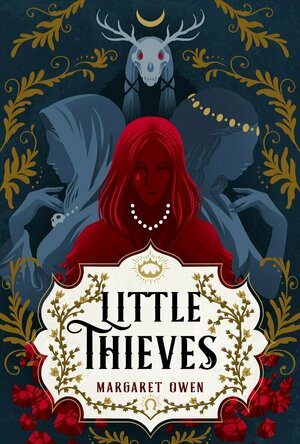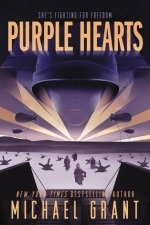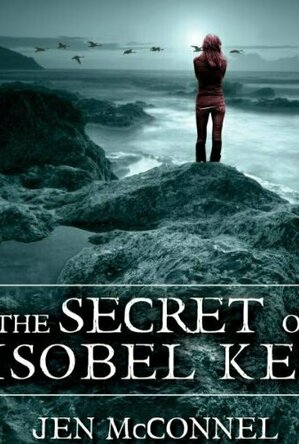
The Secret of Isobel Key (Isobel Key #1)
Book
Lou is in the middle of a quarter-life crisis. Fresh out of college, she’s unemployed and unsure...
Historical Fiction Romance Young Adult

Trapped (Reflections, #6)
Book
Kristin has always been firmly grounded in reality. Trading in small-town Idaho for an Ivy-League...
Young Adult Paranormal Romance
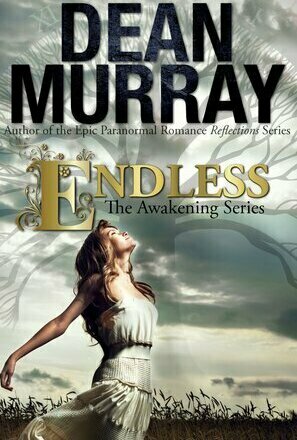
Endless (The Awakening Series #3)
Book
Becoming immortal and mastering god-like powers hasn't been easy for Selene. Enemies shadow her...
Young Adult Paranormal Romance
Karla Dee (6 KP) rated Little Thieves in Books
Nov 19, 2021
This read is a grimm retelling story and is very dark and magical. The author, Margaret Owen, based this book on the "The Goose Girl" which I have never heard of or read. This retelling is also a series so there is another book after this one which is the first of the series. I'd also categorize this retelling as LGBTQ+ which I love. I have no idea what Goose Girl is about but the idea of there being a more woke version is AMAZING to me <3<3<3 Bring on the next book please!

Unlike Any Other by Ed Londergan
Book
The Story of An 18th Century Woman from A Prominent New England Family Who Went from A Life of...
Historical Fiction
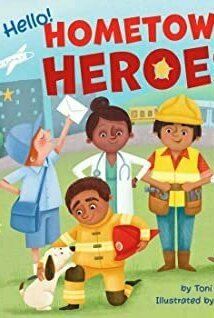
Hello! Hometown Heroes
Book
Get to Know the Everyday Heroes in Your Hometown Hello Hometown Heroes is a charming and fun...
Children Nonfiction Hometown Heroes Kids Heroes
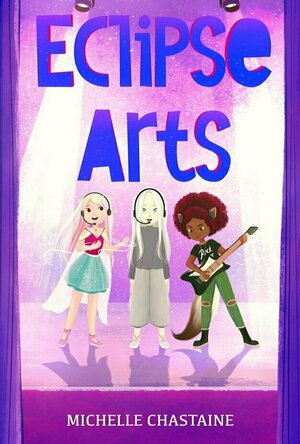
Eclipse Arts
Book
Supernatural seventh-graders forge their own path to stardom… but stardom has its costs! Liska,...
Hazel (1853 KP) rated Purple Hearts in Books
Oct 24, 2017
An epic tale of a reimagined World War II comes to an explosive end in this third and final book Purple Hearts. Michael Grant created an alternative history in which women were allowed to enter the army and fight alongside the men on the front lines in Europe. Having earned accolades, promotions and the right to go home to America at the conclusion of the previous book, Rio, Frangie and Rainy decide to stay for the remains of the war. It is 6th June 1944, and the battle on the sands of Omaha Beach is about to begin – D-Day.
The story rushes into the horrors of the D-Day landings where Rio, now a Sergeant, is leading her platoon through the treacherous battleground, whilst Frangie, the medic, tries to patch up fallen comrades. The author teases the reader with the introduction of new characters who promptly get killed during this fateful day and battles further along the line. There is no sugar coating the horrific experience of soldiers and civilians, regardless of whether the scenes are fictionalized or not.
The difficulty with writing a work of fiction about the final years of World War II is that the majority of readers will already know the facts. Therefore, it was impossible for Grant to compose a drastic alternative history. Despite the inclusion of women soldiers, the main events occur exactly as they did in reality, beginning with D-Day before moving on to Liberated France, the Hürtgen Forest, the Battle of the Bulge, and, eventually, VE Day.
The three main characters have undergone complete transformations since the beginning of book one. No longer are they the innocent girls mocked for the belief they could be as strong as male soldiers. As horror after horror unfolds, readers are left with only the hope that these three survive.
Throughout book one and two, the narrative was interspersed with a commentary from an anonymous female soldier in a bed at the 107th evacuee hospital in Würzburg, Germany. As promised at the beginning of the series, readers finally find out which character this nameless voice belongs to, although it is dragged out until the final pages of the book.
The title, Purple Hearts, refers to the medal earned by soldiers injured in battle. Rio, Frangie and Rainy have each received one, along with a few other characters. Unfortunately, many are killed in the battles, some who have been in the story from the start, making this an extremely shocking book. It goes to show how dangerous war is and the brutality WWII soldiers experienced. It is a surprise that as many survived as they did.
Although at this point the main focus of the story is the war, there is still the underlying theme of equality, both for women and for black people. Frangie provides the insight into the segregation of blacks, being assigned to black-only patrols and having white patients refuse to be treated by her. However, as the war gets more violent, these lines get blurred until it is (mostly) no longer important the colour of a soldier or medic’s skin.
Purple Hearts is a brilliant end to a challenging series. Readers become invested in the characters and are drawn into a story that is so true to form that it is easy to forget that women did not actually take part in the fighting. Evidently well researched, Michael Grant has penned a series that educates whilst it entertains, opening readers’ eyes to the truth about war. This is nothing like a textbook full of facts and figures, it is a moving, personal (forget the fictional bit) account of what WWII was really like. Written with young adults in mind, this is a great series for both teens and older readers.
Hazel (1853 KP) rated Purple Hearts in Books
Dec 7, 2018
An epic tale of a reimagined World War II comes to an explosive end in this third and final book <i>Purple Hearts</i>. Michael Grant created an alternative history in which women were allowed to enter the army and fight alongside the men on the front lines in Europe. Having earned accolades, promotions and the right to go home to America at the conclusion of the previous book, Rio, Frangie and Rainy decide to stay for the remains of the war. It is 6th June 1944, and the battle on the sands of Omaha Beach is about to begin – D-Day.
The story rushes into the horrors of the D-Day landings where Rio, now a Sergeant, is leading her platoon through the treacherous battleground, whilst Frangie, the medic, tries to patch up fallen comrades. The author teases the reader with the introduction of new characters who promptly get killed during this fateful day and battles further along the line. There is no sugar coating the horrific experience of soldiers and civilians, regardless of whether the scenes are fictionalized or not.
The difficulty with writing a work of fiction about the final years of World War II is that the majority of readers will already know the facts. Therefore, it was impossible for Grant to compose a drastic alternative history. Despite the inclusion of women soldiers, the main events occur exactly as they did in reality, beginning with D-Day before moving on to Liberated France, the Hürtgen Forest, the Battle of the Bulge, and, eventually, VE Day.
The three main characters have undergone complete transformations since the beginning of book one. No longer are they the innocent girls mocked for the belief they could be as strong as male soldiers. As horror after horror unfolds, readers are left with only the hope that these three survive.
Throughout book one and two, the narrative was interspersed with a commentary from an anonymous female soldier in a bed at the 107th evacuee hospital in Würzburg, Germany. As promised at the beginning of the series, readers finally find out which character this nameless voice belongs to, although it is dragged out until the final pages of the book.
The title, <i>Purple Hearts</i>, refers to the medal earned by soldiers injured in battle. Rio, Frangie and Rainy have each received one, along with a few other characters. Unfortunately, many are killed in the battles, some who have been in the story from the start, making this an extremely shocking book. It goes to show how dangerous war is and the brutality WWII soldiers experienced. It is a surprise that as many survived as they did.
Although at this point the main focus of the story is the war, there is still the underlying theme of equality, both for women and for black people. Frangie provides the insight into the segregation of blacks, being assigned to black-only patrols and having white patients refuse to be treated by her. However, as the war gets more violent, these lines get blurred until it is (mostly) no longer important the colour of a soldier or medic’s skin.
<i>Purple Hearts</i> is a brilliant end to a challenging series. Readers become invested in the characters and are drawn into a story that is so true to form that it is easy to forget that women did not actually take part in the fighting. Evidently well researched, Michael Grant has penned a series that educates whilst it entertains, opening readers’ eyes to the truth about war. This is nothing like a textbook full of facts and figures, it is a moving, personal (forget the fictional bit) account of what WWII was really like. Written with young adults in mind, this is a great series for both teens and older readers.
Hazel (1853 KP) rated Way Down Dark (The Australia Trilogy, #1) in Books
Dec 14, 2018
Way Down Dark</i> is the first in the <i>Australia</i> trilogy by J.P. Smythe, a brand new dystopian series for young adult readers. The world has been destroyed and humans boarded space ships in order to find somewhere to live, however, generations later the passengers aboard <i>Australia</i> have not found anywhere. The years have taken their toll on the ship, which is slowly falling to pieces, it’s inhabitants reduced to scavengers.
Recently orphaned Chan is living alone and trying to fend for herself as the Lows, an ever-increasing band of murderous thugs, wage war on everyone else. Nowhere is safe and quite often Chan finds herself in a situation where it is either kill or be killed. When Chan’s mother died her last instructions were to stay out of trouble, be selfish and don’t die. Chan on the other hand finds it extremely difficult to be selfish when she sees other people in life threatening situations. Thankfully she has Angela, a fifty something woman, looking out for her. But then Angela introduces Chan to a part of the ship no one has ever been to before, a part that challenges the truth behind the stories believed by everyone about the destruction of Earth. This new knowledge fuels Chan’s determination to save the lives of as many she can, thus finding herself in perilous situations.
Despite being set in the distant future, the characters at the beginning are living lives similar to those of the past – making clothes, shoes and weapons from scratch, picking fruit in the arboretum in order to eat. So although many dystopian novels involve some kind of enhanced technology, <i>Way Down Dark</i> does not, which separates it from other books of the same genre.
As well as Chan’s narrative, the novel also contains Angela’s stories of the past when Chan’s mother was young. These help to explain some of the situations the characters find themselves in now. It is also through Angela that Chan begins to discover the truth about the ship <i>Australia</i> and the lies they have been led to believe.
The main characters are very likable and display a range of personalities, each adding something different to the story. Chan is quick thinking, strong-willed and unselfish whereas, although Angela cares and protects, she keeps more to herself rather than jump into the fight in order to be a hero. Finally, Jonah, a young man who teams up with Chan and Angela, is a mix of Chan’s personalities with a religious streak, or what passes as religious on the <i>Australia</i>.
Although it is less futuristic than other popular young adult novels such as <i>Divergent</i> or <i>The Hunger Games</i>, readers are bound to enjoy <i>Way Down Dark</i> and its sequels. It is full of action, violence and survival told from the point of view of a teenage girl. <i>Way Down Dark</i> is a highly recommended, gripping novel, which promises to satisfy the needs of dystopian lovers.
